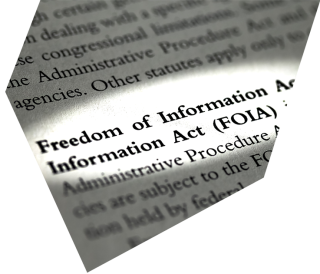
The Commonwealth’s Revised Procurement Rules – What does it mean for me?

Those of us in the procurement and contract management space will be well aware that a new version of the Commonwealth Procurement Rules (CPRs) will take effect from 1 July 2024. Released just over a year after the latest CPR revamp, you might ask – why is another version of the CPRs necessary? The answer can be found in what is currently happening in both the public sector and private industry, along with a focus on protocols to mitigate and control for fraud and corruption.
Back to the headline – what’s in it for sourcing professionals? The newly-minted CPRs contain significant changes in these areas:
Alignment to sustainable procurement guide,
Benefit to Australian economy threshold reduced from $4M to $1M,
Enhanced Small Medium Enterprise (SME) target so that at last 40% of contracts valued up to $20 million are with SMEs,
New s17 exemption definition, aimed at enhancing SME engagement with provisions to directly engage in tenders up to $500k,
Definition of a SME,
Enhanced fraud/corruption focus – in line with the new framework, and
Inclusion of the supplier code of conduct.
Alignment to the sustainable procurement guide
The Commonwealth Government developed the Sustainable Procurement Guide with the goal of helping to build a ‘circular economy.’ The Guide aims to reduce adverse social, environmental and economic impacts of purchased goods and services. It also assists sourcing professionals by including considerations such as waste disposal and the cost of operations and maintenance over the life of the goods and services. The result? Sourcing professionals will need to be more forthcoming and proactive on circular economy and sustainability initiatives.
Reduction of the Benefit to the Australian Economy threshold
The decrease in the “Benefit to Australian Economy” threshold from $4 million to $1 million means that all procurement activities more than $1 million will need to prove broader benefits to the Australian economy. The impact? Officials will need to consider the economic benefit to the Australian economy, as well as making better use of Australian resources, increase productivity and innovation and support the development of domestic industry capabilities. Existing panel procurements are exempt from this requirement. Why? An assessment in relation to Economic benefit was already incorporated in the existing panel. However, the Department of Finance has developed more Guidance on how to demonstrate that benefit.
Enhanced SME target
The enhanced target for SMEs comes as no surprise – the Commonwealth is a major buyer of goods and services. That’s in addition to the current Government’s stated objective to reduce its reliance on “the Big 4.” The Government is seeking to enhance the target by requiring agencies to source from small businesses for contracts under $1 billion – and changing the requirement from 20% to 25% of tenders. At the same time, the SME target for contracts below $20 million is increasing from 35% to 40%.
New s17 exemption definition
Exemption 17 has been in the CPRs for some time, but has been strengthened to allow agencies to approach SMEs directly for contracts up to $500,000 – this applies to contracts that can’t be delivered by an Indigenous-owned SME under the Indigenous Procurement Policy. This change will allow agencies to use the exemption more readily and assist them in meeting the enhanced SME target of 40% of contracts (below $20 million) being awarded to Indigenous-owned entities.
Definition of an SME
A key change in the CPRs can be seen in the definition of a SME. The revised SME definition clarifies a number of key elements, including the size of the company and the requirement to “count” the parent company. For reference, the new definition of SMEs is: “an Australian or New Zealand firm with fewer than 200 full-time equivalent employees. When assessing the number of employees a firm has, employees of any associated entities (as defined in s 50AAA of the Corporations Act 2001) to the firm are included. Associated entities to a firm include a firm’s parent company, a firm’s subsidiaries, and any related bodies corporate to the firm.” The revised definition will better enable Commonwealth agencies to align this criterion with the policy objectives in the CPRs.
Enhanced fraud/corruption focus
Changes to the CPRs are coupled with the release of the new Commonwealth Fraud and Corruption Control Framework, which also comes into effect on 1 July 2024. This framework replaces the 2017 version and aims to more effectively manage the risks of fraud and corruption. The changes in the CPRs allows for alignment with this new framework.
Inclusion of the supplier code of conduct
The last, but equally notable change to the CPRs, is the inclusion of the Supplier Code of Conduct. The Code applies to both the CPRs and the broader Resource Management Guidelines – and to all Commonwealth contracts from 1 July 2024. It also places a positive duty on suppliers to take proactive steps to prevent and discourage breaches of the Code. In simple terms, those steps include requirements to act ethically, with integrity, as well as protecting information, adhering to the APS values, along with other expectations relating to governance & business practices, WHS and respect.
For those wanting to delve more deeply into the changes - the comprehensive table of all changes to the CPRs is here: Table of Changes CPRs (finance.gov.au). As always, please reach out to Saskia Keenan in our Strategic Sourcing practice if we can be of help to you in your commercial activities.


Are ACCUs one big green Monopoly game?

“It doesn’t have to be this way” (Adversarial practices in procurement and contracting)
